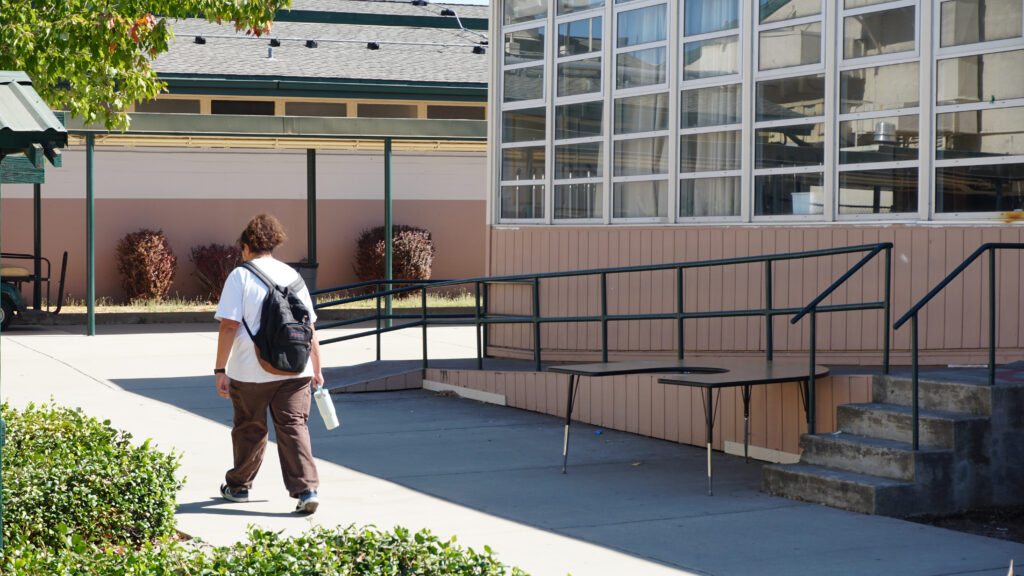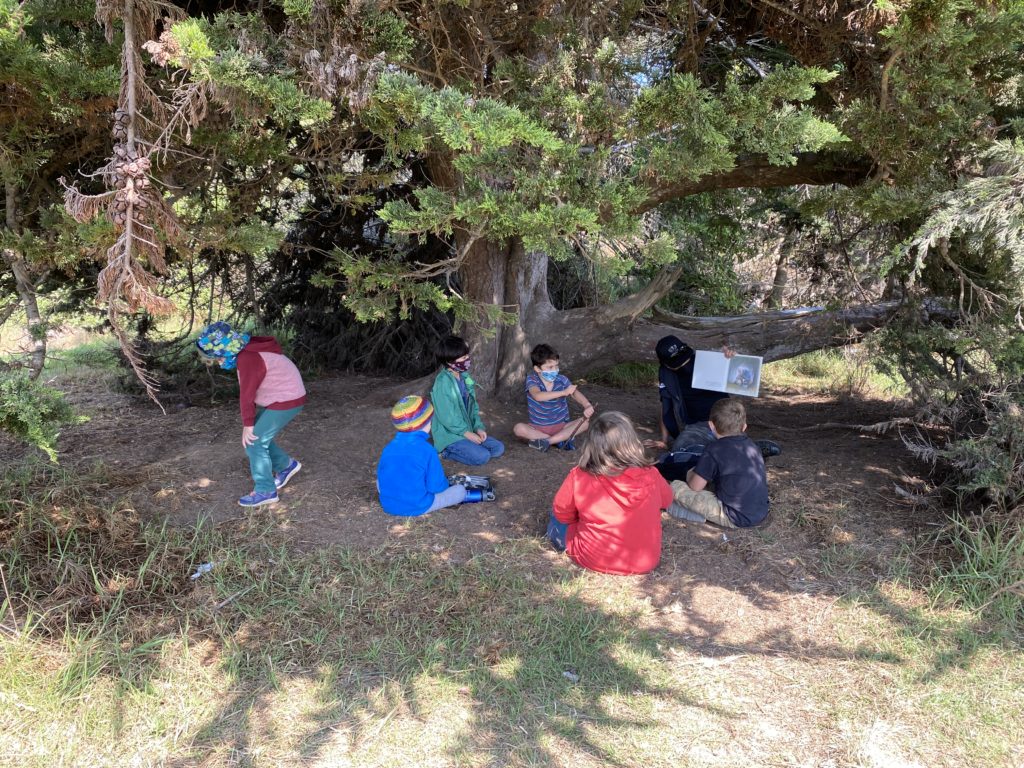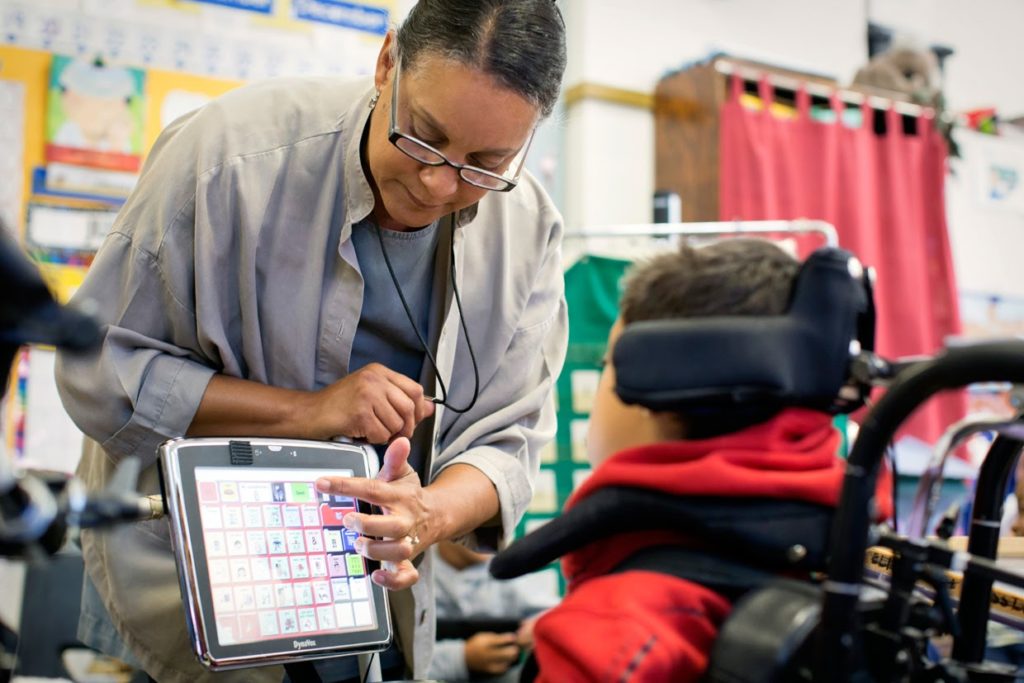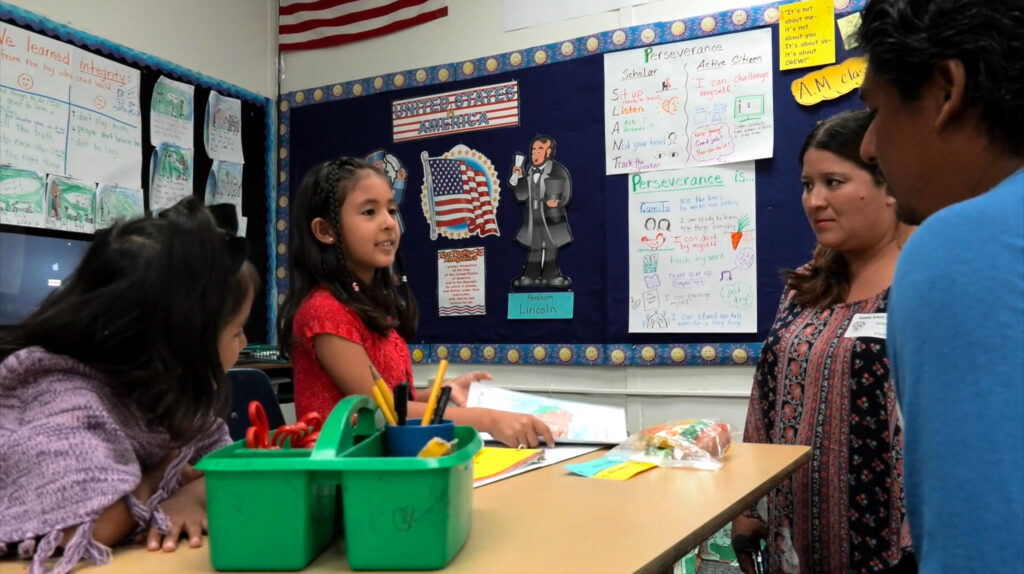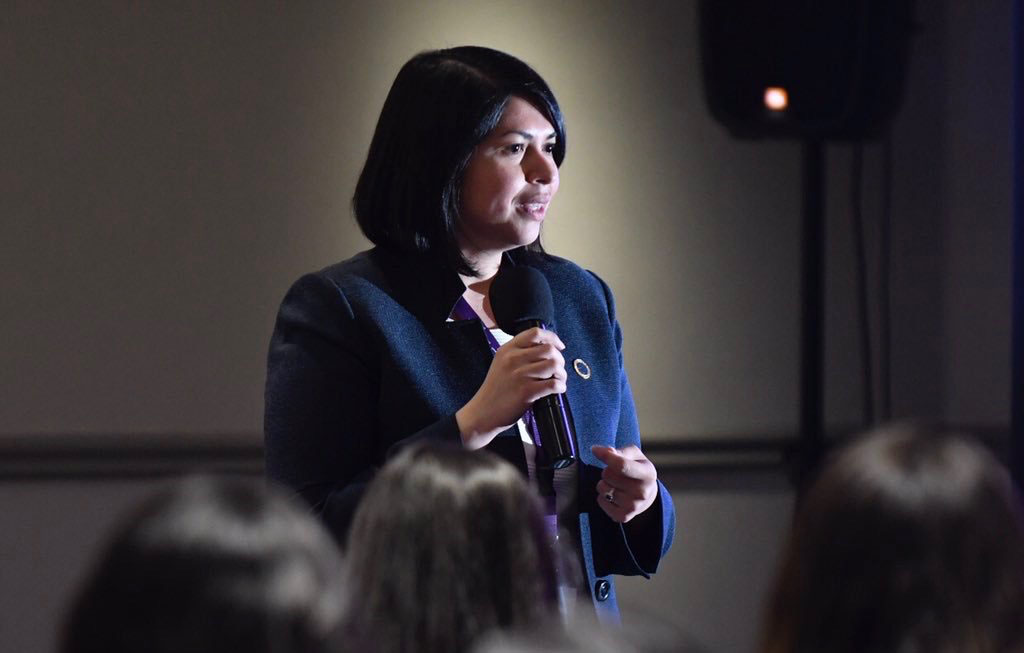
Alice Keeney was in the Navy from 2003 through 2012, where she learned how to safely operate the nuclear propulsion plants that power submarines and aircraft carriers.
When she enlisted in the Navy in 2003, Alice Keeney attended naval nuclear power school.
There, she learned how to safely operate the nuclear propulsion plants that powered submarines or aircraft carriers — knowledge that she used when she was deployed outside the Arabian Gulf as a nuclear surface warfare officer in the late 2000s.
Keeney’s expertise in nuclear theory and practice was valued enough that she became an instructor in the Navy, and she trained the first 22 women who became submarine volunteers.
Keeney specifically chose this path into the Navy because she believed it would give her skills that are valued in the civilian world. She spent many 12-hour days in school — not counting homework — studying advanced physics, math, chemistry and reactor core nuclear principles. She expected she could skip a few semesters ahead in college — and maybe even have enough funding from her G.I. Bill left over to attend graduate school. But it wasn’t that easy.
When she enrolled in chemical engineering at Cal Poly Pomona in 2012, Keeney was dismayed to learn that nothing on her Joint Services transcripts, a document that describes military training in a way that makes sense to colleges or employers, amounted to a single college credit.
“It was frustrating to look at my transcript — for somebody who has the experience I have, who has the training that I have,” Keeney said. “There were classes listed like general chemistry — I should never have had to take that.”
The benefits of getting credit for prior learning
When students start college later in life, they often bring unique knowledge and skills with them. The military is the most common way — at least it is now — but that experience can also come through a job, a hobby or even volunteering.
Increasingly, universities and colleges are working on ways to award credit to students for what they have learned outside the classroom. California’s community colleges and Cal State University system, in particular, have expanded this over the past decade, formally recognizing this experience, known as credit for prior learning (CPL).
This week, Gov. Gavin Newsom praised the practice during a news conference about the state’s effort to improve career education. He is promoting a shift toward what he calls a “skillset mindset,” where Californians can demonstrate their skills and knowledge beyond grades or a credential, whether those skills were picked up in school, the military or volunteering.
He lauded the community colleges for ensuring that military members don’t have to “take basic requirements for education that they’ve already received in the military,” he said. “They get credit for prior learning.”
How students receive credit can vary widely, depending on the discipline. Students might take a challenge test. A portfolio review by a faculty member might be appropriate for business or art courses. Some jobs require certifications that can transfer into course credit.
Research shows that students who receive credit for what they’ve learned outside a classroom save time and valuable tuition dollars. A national study by the Council for Adult and Experiential Learning (CAEL) found that students who entered college with 12 credits through prior learning could save anywhere from $1,500 to $10,500 and shave nine to 14 months off their time in college.
There are also psychological benefits for students who start college with credits under their belts.
“Students begin their college careers with a sense of momentum and accomplishment,” said Tina Barlolong, a veteran and credit-for-prior-learning counselor at Palomar College in San Diego.
This might help to explain why 49% of students who received this credit for prior learning completed their degree compared with 27% of students who received no credit, according to the study by the Council for Adult and Experiential Learning. The national study followed more than 200,000 students, largely over the age of 25, at 72 institutions for over seven years, beginning in 2011.
“That student immediately feels valued, they feel seen, and they’re going to take more advanced level classes, they’re more likely to take more units,” said Su Jin Jez, CEO of the nonprofit California Competes, a nonpartisan policy and research organization.
Students who receive credit for prior learning avoid the sense of deflation that Keeney felt when she realized that she would be required to take courses, like general chemistry, that she had long surpassed as a nuclear propulsion plant supervisor in the Navy. That may send students the message that college isn’t for them, Jez said.
“We spend all this money on them and put them in harm’s way,” said James Cahill, an advocate for credit for prior learning for vets. “They come home and are told [their experience is] worthless.”
Meeting workforce demand
This is a subject that hits close to home for Jez. Her father spent two decades as a plane mechanic in the Air Force, but when he tried to attend a community college, he struggled to prove that he had the knowledge and skills to skip ahead in his coursework. Because he couldn’t get college credit, he opted to become a letter carrier.
“We did fine, but he would have earned more,” Jez said. It’s not just her father who lost out, she said; the workforce also lost a worker with highly specialized and in-demand skills.
This is what has motivated Cahill to advocate at both the state and federal level for veterans to be awarded college credit for their military training. Cahill’s son served as a medic in Iraq, but he received no credit for his military training when he enrolled as a premed student at Sacramento State. Cahill said his son burned through his G.I. Bill money by taking a lot of classes on topics he had already put into practice on the battlefield.
Cahill testified about this issue at the height of the pandemic when the shortage of nurses became a crisis.
“If they had had these laws in place, imagine how many nurses could have backfilled,” he said. “Imagine how many teachers and law enforcement and the language that [veterans] bring to a college campus.”
Credit for prior learning isn’t a new concept. Since at least World War II, the American Council on Education has evaluated military training to help veterans transition to civilian life. But there are still no federal guidelines requiring colleges and universities to honor veterans with credit.
Recently, credit for prior learning has begun to receive renewed attention as a way to encourage students to enroll — or re-enroll — in college to finish their bachelor’s or other post-secondary degree. One group of students with some college credit but no degree has caught the attention of colleges and universities, especially in the wake of pandemic-era enrollment losses.
About 1 in 5 adults in California over age 25 have attended college but do not have a degree. These are students that were at one point interested in a credential, but were, for a variety of reasons, sidelined.
One of those students was Benjamin King. His first attempt at college didn’t go well, he said; early fatherhood threw a wrench into his plans. He planned on returning to school but then found a well-paying computer programming job that was stable — until the company downsized, and he became jobless.
“At that point, I was at this crossroads where I was trying to figure out: Do I want to continue on my programming journey or do I want to go in a different direction?” he said.
King enrolled in Palomar College to explore his options. It wasn’t his programming background that called to him, but his passion for photography. He took a job on campus running the photography lab. He enjoyed mentoring students and offering advice from the vantage of being an older student.
“The faculty really saw the way I was interacting with the younger students and how I was able to help them out,” he said.
He was encouraged to apply for an adjunct faculty position in the photography department. There was one problem: He didn’t yet have an associate degree needed for the position, and the clock was ticking for when applications would close.
Faculty encouraged him to petition for college credit through the prior learning program. Palomar College’s work to expand its process has paid huge dividends for veterans and even active duty members, but it also helped King, who had no military experience.
King put together a portfolio of his photography that the faculty reviewed. This enabled him to get credit for several photography courses, finish his degree quickly and ultimately, land the adjunct faculty position.
Now he enjoys teaching photography courses and continuing to mentor students. Recently, a pregnant student came to him concerned about her future. He was able to assure her that he had been in a similar boat — and that it wasn’t the end of the road for him.
“I enjoyed programming and still do it for fun,” King said. “But I get much more fulfillment from this job.”
California slowly improves
Trying to get credit for prior learning can be difficult. It’s not just students who need help navigating this arena — even many counselors or faculty don’t know what’s happening on their own campuses, according to Wilson Finch, vice president of initiatives at the Council for Adult and Experiential Learning.
Finch compares the national landscape of credit for prior learning to an overgrown garden: “It needs a good pruning and cleanup just to make it useful for people.”
Public universities and colleges in California have been doing some of that pruning. Legislation over the past decade has encouraged public universities to do more.
Veterans have been a key target of legislation. They make up a small percentage of the student population, but — at least for now — the majority of students who are receiving credit for prior learning. Most begin their academic careers at community colleges.
In 2012, legislators passed a bill requiring the chancellor of California Community Colleges to determine which courses could be completed using military credit. But state Sen. Richard Roth, D-Riverside, complained that three years after the law was supposed to be implemented, community colleges “still lack a uniform policy for the awarding of course credit for military education, training and experience.”
The Senate passed Roth’s bill, SB 1071, requiring community colleges at the district level to create a consistent policy aimed at awarding veterans credit. Another bill, AB 1002, passed in 2021, was aimed at the CSU and UC systems.
Cahill said he is frustrated to see Newsom only now promoting what had been signed into law before he took office.
“The delay meant that thousands of veterans got no college credit,” he said.
Advocates say that efforts to improve and expand credit for prior learning will benefit the larger student population outside the military. In fact, the 2020 study by the Council for Adult and Experiential Learning found that when non-veteran students received credit for prior learning, nearly three-quarters completed their credential.
But a 2018 survey from the California Community College Chancellor’s Office noted that 81% of credit awarded at community colleges was for military training compared with 13% for job training.
The Chancellor’s Office would like to see that change. It has set an ambitious goal of ensuring that at least 250,000 Californians receive credit for prior learning by 2030, with most of those credits going to non-veterans. The Mapping Articulated Pathways (MAP) Initiative supports community colleges in these efforts through training, technology and policy.
Streamlining the process for veterans to get credit for prior learning has sparked an effort to improve the system as a whole, according to Brent Foster, Cal State’s assistant vice chancellor and state university dean of academic programs. Each campus in the CSU system now has its own policy.
“That was the whole reason many of us went back to the drawing board with CPL,” Foster said.
Public colleges and universities now largely have their own policies for credit for prior learning. But that doesn’t mean it’s been fully implemented.
“It’s not a light switch you flip, and it just runs,” Foster said. “You have to make sure the bones are good.”
Counselors, faculty members and other staff are key in making sure that students even know that they might be eligible for the credit. The 2018 survey by the Chancellor’s Office found that the main barrier was a lack of awareness.
“It’s an important reminder as we intake students,” Foster said, “that we need to look at the whole student and what kinds of experiences might help them graduate faster and save money.”
At Cal Poly Pomona, that means that administrators involved in promoting credit for prior learning have been holding discussions with groups on campus, such as faculty, department chairs and advisers to get feedback, and, perhaps most importantly, a buy-in, according to José Lozano, articulation officer in the Cal Poly Pomona registrar’s office.
Changes at Cal Poly Pomona have come too late for Keeney to avoid taking classes she didn’t need. To save money, she ended up finishing her senior year through an online college. But her story became a case study for improving the credit for prior learning process — not just at Cal Poly but other CSU and community college campuses, according to Elke Azpeitia, director of the Veterans Resource Center at Cal Poly Pomona.
Keeney said beyond policy, it’s important that people inside the system understand why credit for prior learning is so important.
“I think having allies in universities who see value in education that isn’t just structured in a college scenario or university scenario,” Keeney said. “That’s a big thing.”
